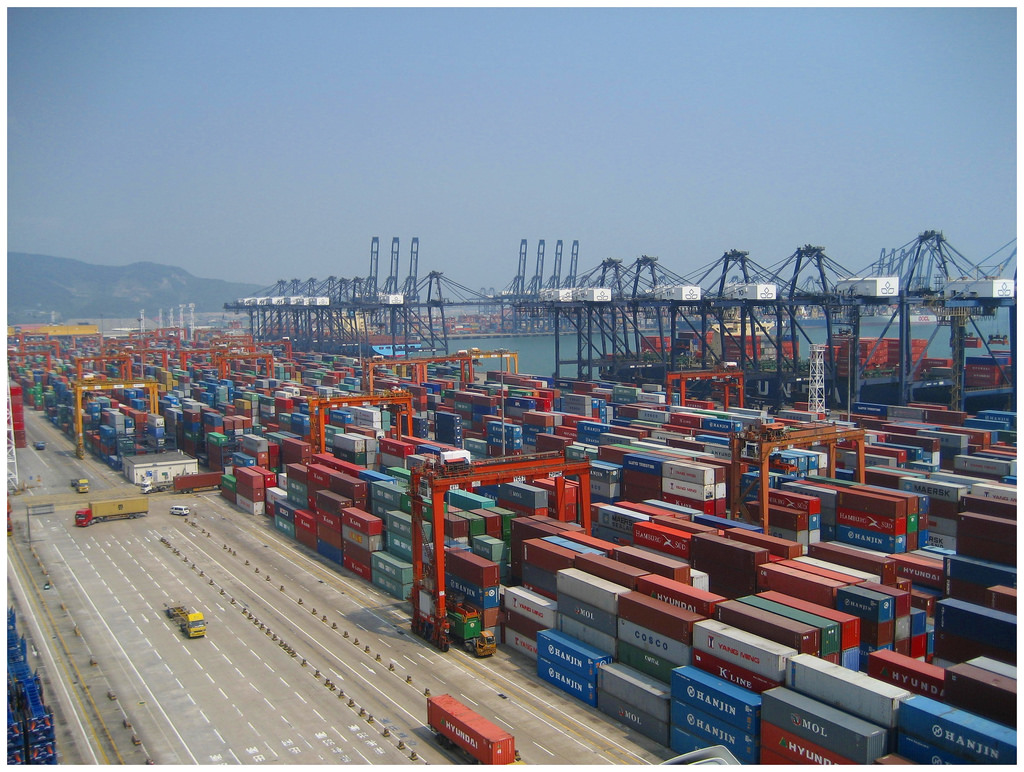
Photo Credit: Bert van Dijk
This year, the Trump administration’s trade friction with China escalated. The US sped up the regular trade investigations such as countervailing, antidumping, and the Section 337 investigation. At the same time, non-regular trade protection measures, like the Section 301, 201, and 232 investigations, global safeguard measures, and a reciprocal tax directed at trade partners, were also taken. Trade friction caused by changing the “imbalanced China-US trade” have become more serious.
”America first”, “fairness”, “equality” and “reciprocity” seem to be the core of the Trump’s economic and trade policy. For more than a year since Trump became president, 94 items from more than ten countries have been under “unfair trade” investigations, a sharp increase of 81%. At the beginning of 2018, the White House also listed China as a “focus” of 2018 US trade policy. All these underline Trump’s belief that “China rebuilt itself with money drained out of the US,” and points to a more aggressive trade policy.
Trump’s aggressive trade policy bears three characteristics. First, after the “free trade” during the Clinton and Bush administrations, and the “fair trade” of the Obama administration, the Trump administration turns to trade sanctions, and even threatens trade partners with a trade war, forcing them to have bilateral talks so as to obtain the so-called “equal trade (interests)” and “reciprocal trade (interests)” through bargaining.
Second, economic security is pushed up to the level of national security. The US Department of Commerce believes that imported steel, iron, and aluminum seriously hurt domestic industry, and threatens national security. It suggests imposing restrictions on these commodities from China, Japan, and the EU, including measures such as high tariffs and import quotas. In fact, Trump has overprotected domestic products in the name of “national security,” going far beyond general economic interests.
Third, the multilateral trade system has been comprehensively weakened. The US trade agenda released by the US Trade Representative’s Office in 2017 already made it clear that the US took “America first” as the starting point rather than WTO rules, saying that “trade policy should protect national sovereignty” and stressing “strictly enforc[ing] US trade law."
The Chinese and American economies are still very complementary. China’s exports are mostly consumer goods while the US’ exports to China are mainly capital and technical products. It is not an easy thing for China and the US to curb each other through a trade war without hurting their national interests, nor is it realistic to eliminate the bilateral trade imbalance with a trade war.
In reality, the potential structural contradictions between China and the US will get more and more prominent in the future. China’s trade surplus with the US not only exists in labor-intensive product markets, but also in the capital- and technical-intensive product markets. With the new round of global hi-tech competition beginning, trade frictions in the capital- and technical-intensive industries will become normalized. The competition will inevitably escalate further in major areas such as large aircraft, integrated circuits, new materials, air craft engines and gas turbines, 5G, and new energy vehicles.
In the wake of the Section 301 investigation by the US Trade Representative against China, the aggressive trade policy aims at China’s industrial policy, the investment field, and market openness. The American think tank, the Center for Strategic and International Studies, anticipates that the Trump administration’s main target will be China’s industrial policy. For example, starting from “Made in China 2025”, the Trump administration has shown great concern on China’s policies in many technical areas such as autonomous vehicles, medical equipment, semi-conductors, artificial intelligence, and robots. So, the real target of the Section 301 investigation is “Made in China 2025”.
Besides, the White House is considering laying down a “reciprocal investment system” aimed at China. This idea proposed by the US Trade Representative Robert Lighthizer and USTR General Counsel Stephen Vaughn will restrict Chinese enterprises’ investment in the US. If the proposal is put into effect, the most serious consequence is that the Chinese government will in turn restrict US investment in China and enact an industrial investment ban.
The escalation of aggressive trade policy will also make China-US cooperation unprecedentedly difficult. The history of the US and Japanese trade wars tells that as the Japanese industrial structure changed, the areas that caused trade friction expanded from the light and heavy chemical industries to high-technology and then to finance. Correspondently, the resolutions to the trade frictions developed from the compulsory tariff, quota, and voluntary export restrictions before 1985 to exchange rate regulation, voluntary expansion of imports, industrial policy, and market opening after 1985, and finally the U.S.-Japan Structural Impediments Initiative, which was signed in 1989 whereby Japan promised to partially open its market. However, partially opening the market did not satisfy the US. The US once again asked Japan to open its whole market but was refused in 1993 and resorted to “the Section 301” sanction again to force Japan to open the whole market in exchange for defusing the trade conflict, thus ending the trade war between the US and Japan after nearly ten years. We don’t wish to see history repeat.
It is certain that the China-US “competitive cooperation relationship” is entering a new stage and will develop into a more mature and competitive relationship. This kind of relationship will inevitably produce normalized frictions and conflicts. How China and the US avoid a tit for tat exchange and explore a new basis of mutual benefit and win-win cooperation through negotiations is particularly urgent.



